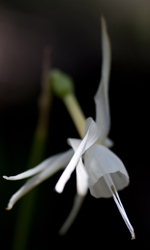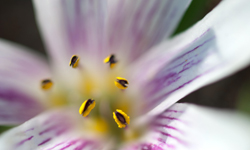Back to Projects

Although recent efforts have greatly contributed to the characterisation of pollination networks, much less is known about the processes leading to their assemblage. We believe that three essential ingredients contribute to the structure and topology of pollination networks: rewards, barriers and competition (Rodríguez-Gironés and Santamaría 2010). Most pollinators are animals seeking resources (food, resins for nest building, fragrances…) and their foraging decisions will attempt to maximise intake rate. Intake rate is determined by the amount and quality of the resources encountered (rewards) and the time and energy that must be invested in finding and exploiting them (barriers). In the case of pollination, resources (particularly nectar and pollen) are quickly depleted, and therefore the amount of resources a focal pollinator encounters at a certain flower will depend on how all other pollinators are behaving (competition).
Our approach has been to model pollinators as optimal foragers to predict which plants they will exploit. Because the traits of plants – be it the quality and quantity of the reward they offer or the barriers they mount to make resource exploitation difficult for visitors – affect the foraging decisions of individuals and, as a result, the groups of pollinators visiting each flower type, understanding how pollinators make foraging decisions helps us understand both how pollination networks are structured and what selective pressures pollinators exert on flower traits.

So far, our research on this topic has been solely theoretical. But we are looking forwards to testing the theory. We encourage you all to test our ideas with your own study system. We would be delighted to collaborate with you in the endeavor, so don’t forget to tell us if you need a field assistant or if you want to discuss the best way to test our models with your own system!
Related publications